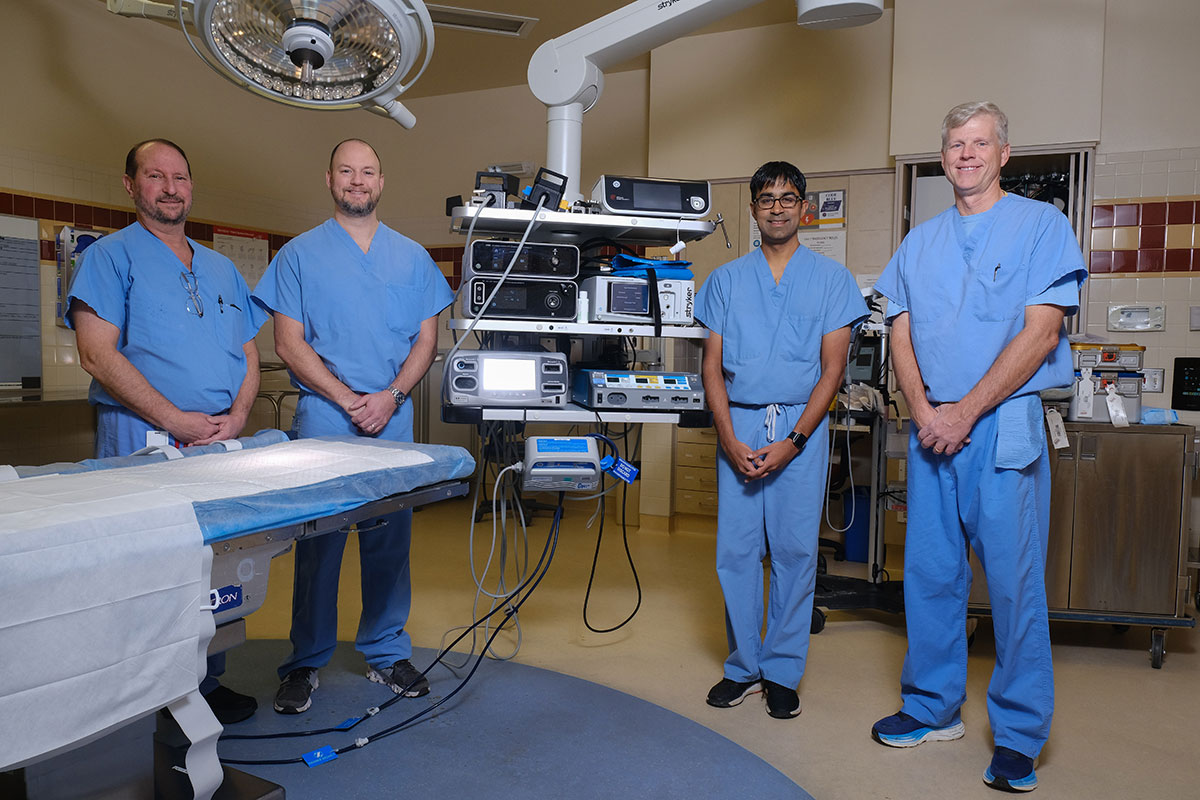Subscriber Benefit
As a subscriber you can listen to articles at work, in the car, or while you work out. Subscribe Now
Franciscan Health
Honoree, Innovations in Health Care
Even relatively minor surgery can pose major problems for patients, causing pain and debilitation and perhaps biting a chunk out of their personal and professional lives as they recover. Franciscan Health Indianapolis is aggressively addressing this multifaceted issue with its Enhanced Recovery After Surgery/Perioperative Surgical Home protocols program.
“They’re designed to achieve early recovery after surgery by maintaining your preoperative organ function, thus reducing the profound stress of surgery that normal patients will frequently endure,” said anesthesiologist Dr. Wade Wrightson, leader of the ERAS/PSH program.
Multidisciplinary teams composed of surgeons, anesthesiologists, nurses, pharmacists and others have worked to develop best practices for quick recovery from everything from open-heart procedures to gall bladder removal to bariatric surgery. Before their operation, patients are told what actions they can take to influence the success of their surgery and post-op recovery, including nutrition guidance, pre-surgery exercise programs, diabetes control, carbohydrate loading and more. Patients also visit a preoperative clinic to ensure they’re optimized for their procedure. A plan to deal with (among other things) possible post-op infection and nausea is also put in place, and surgical pain is tackled via a “multimodal” plan that minimizes the use of narcotics.
Typically, ERAS/PSH patients are up and walking shortly after the procedure. And their hospital stay can be markedly reduced.
“For example, in our bariatric program, they all used to stay a day, sometimes two days,” Wrightson said. “Now they’re sending up to 22% of our patients home on the same day of surgery.”
The program is used for pretty much every form of common surgery, with the cardiac protocols showing some of the most interesting results.
“We’ve been able to get these patients up and moving and discharge them sooner,” Wrightson said. “In many cases, our open-heart patients don’t need any opioid care.”
An innovative surgical technique for heart patients also makes a huge difference. Instead of cutting the sternum apart and then wiring it back together, Franciscan surgeons use rigid, supportive plates to close the rib cage. Those plates, along with ERAS/PSH protocols, mean less pain for patients, who quickly get back on their feet and face no restrictions on things like driving and lifting.
ERAS/PSH heart surgery patients have also seen their self-reported pain scores plummet, with less than 10% of patients going into an extended-care facility before returning home—a huge cost savings. Also, less time spent in the surgical intensive care unit and on post-op ventilators has so far saved a bit over $2 million. As for general surgery cases (appendectomies, hernia repair, etc.), the already-short average hospital stay of 36 hours has been reduced about 20%.
“You’re saving literally 12,000 nursing hours by discharging those patients more quickly,” Wrightson said. “So you’re seeing those patients leave your hospital sooner and with fewer complications, while also improving hospital efficiency.”
Refining the ERAS/PSH process for each type of surgery, from pre-op to post-op care, is a never-ending process, fueled by an ever-increasing mound of data on what works and what perhaps could work even better.
“Every year, we’ll sit down with each surgical group, review the data, examine the literature in the field, and decide whether we need to add something new or decrease the use of something else,” Wrightson said. “I think this has been very good for both physicians and patients.”•
Please enable JavaScript to view this content.
